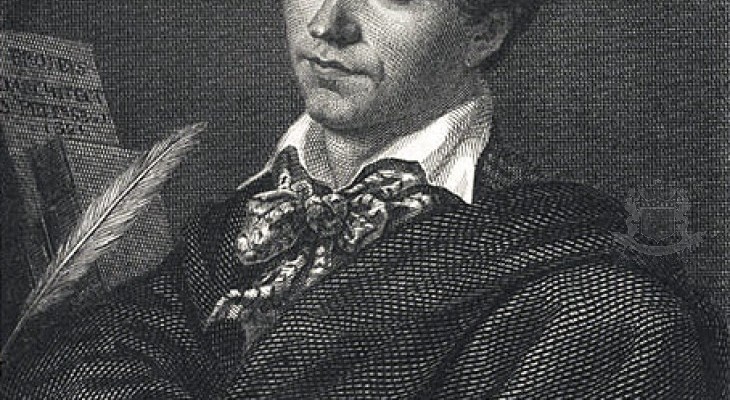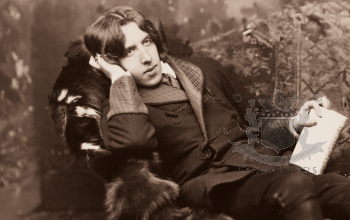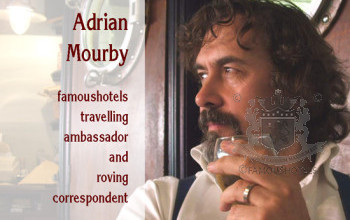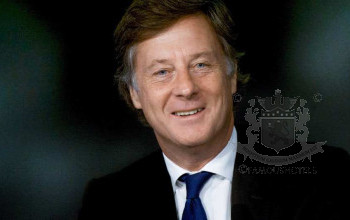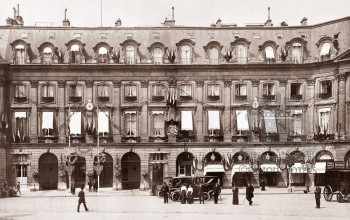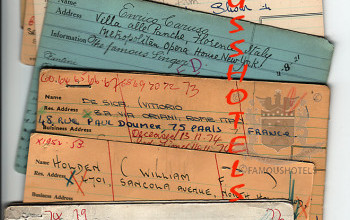Carême, Marie-Antoine
( words)
Marie Antoine Carême (June 1784–12 January 1833), known as "The King of Chefs, and the Chef of Kings". He was an early practitioner of a modern style of cooking known as haute cuisine, the "high art" of French cooking favoured by both international royalty and by the newly rich of Paris. Carême is often considered as one of the first, internationally renowned celebrity chefs.
Born in Paris and abandoned by his parents in 1792 at the height of the French Revolution, he worked as a kitchen boy at a cheap Parisian chophouse in exchange for room and board. In 1798, he was formally apprenticed to Sylvain Bailly, a famous pâtissier with a shop near the Palais-Royal. Bailly recognized his talent and ambition. Soon he opened his shop, the Pâtisserie de la rue de la Paix, which he maintained until 1813.
Carême gained fame in Paris for his pièces montées, elaborate constructions used as centerpieces, which Bailly displayed in the pâtisserie window. He made these confections, which were sometimes several feet high, entirely out of foodstuffs such as sugar, marzipan, and pastry. He modeled them on temples, pyramids, and ancient ruins, taking ideas from architectural history books that he studied at the nearby Bibliothéque Nationale, thanks to the enlightened attitude of his first employer Bailly.
He worked for Charles Maurice de Talleyrand-Périgord, but also other members of Parisian high society, including Napoleon. While working on his confections at many private kitchens, he quickly extended his culinary skills to main courses.
Napoleon was famously indifferent to food, but he understood the importance of social relations in the world of diplomacy. In 1804, he gave money to Talleyrand to purchase Château de Valençay, a large estate outside of Paris. The château was intended to act as a kind of diplomatic gathering place. When Talleyrand moved there, he took Carême with him.
Carême was set a test by Talleyrand: to create a whole year’s worth of menus, without repetition, and using only seasonal products. Carême passed the test and completed his training in Talleyrand's kitchens. Talleyrand's table became famous during the negotiations that followed the fall of Napoléon, at the Congress of Vienna.
Carême went to London for a time and served as chef de cuisine to the Prince Regent, later George IV. Returning to the continent he followed the invitation of Tsar Alexander I to come to St. Petersburg, where he tarried so briefly he never prepared a meal for the Tsar before returning to Paris, where he was chef to banker James Mayer Rothschild.
He died in Germany at the age of 48. He is remembered as the founder of the haute cuisine concept and is interred in the Cimetière de Montmartre in Montmartre.
Carême's impact on culinary matters ranged from trivial to theoretical. He is credited with the inventions of gros nougats and grosses meringues, croquantes, made of almonds and honey, and solilemmes (Sally Lunn's cake).He also created the standard chef's hat, the toque; he designed new sauces and dishes, he published a classification of all sauces into groups, based on four mother sauces. He is also frequently credited with replacing the practice of service à la française (serving all dishes at once) with service à la russe (serving each dish in the order printed on the menu) after he returned from service in the Russian court, but sources differ on this point.
Carême wrote five works on cookery, above all the encyclopedic L'Art de la Cuisine Française (5 vols, 1833–34, of which he had completed three before his death), which included, aside from hundreds of recipes, plans for menus and opulent table settings, a history of French cookery, and instructions for organizing kitchens.

